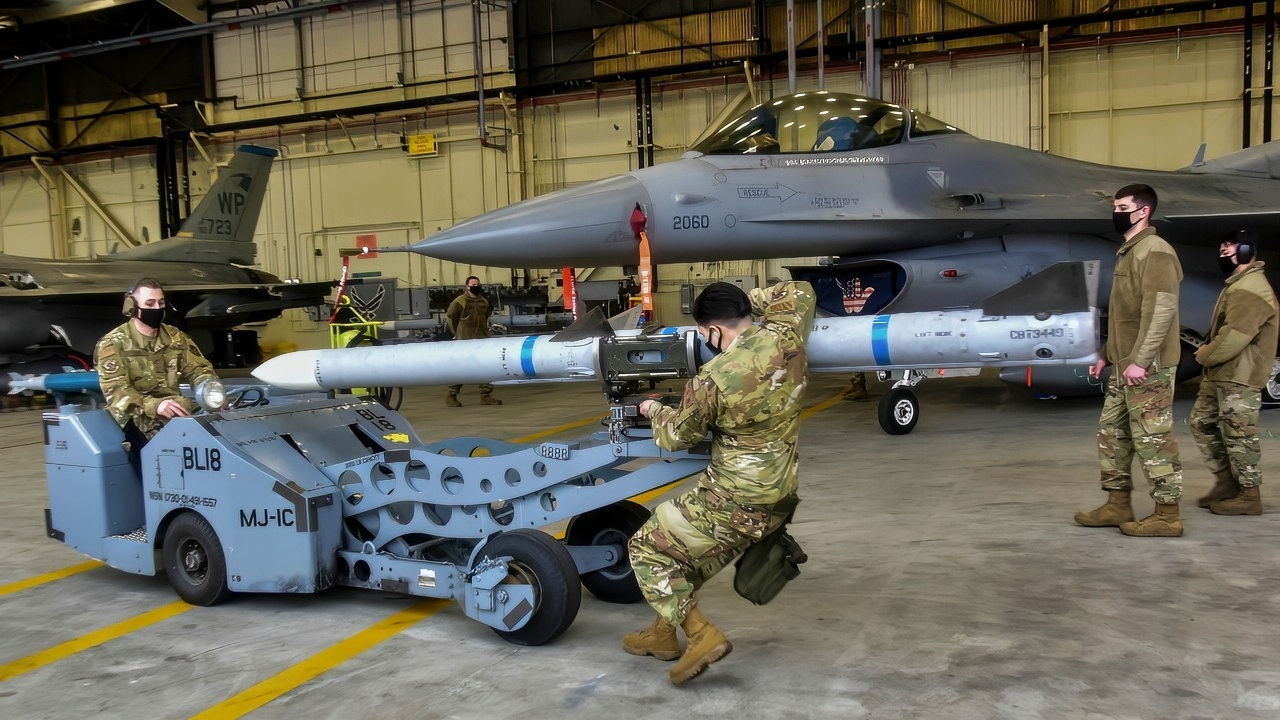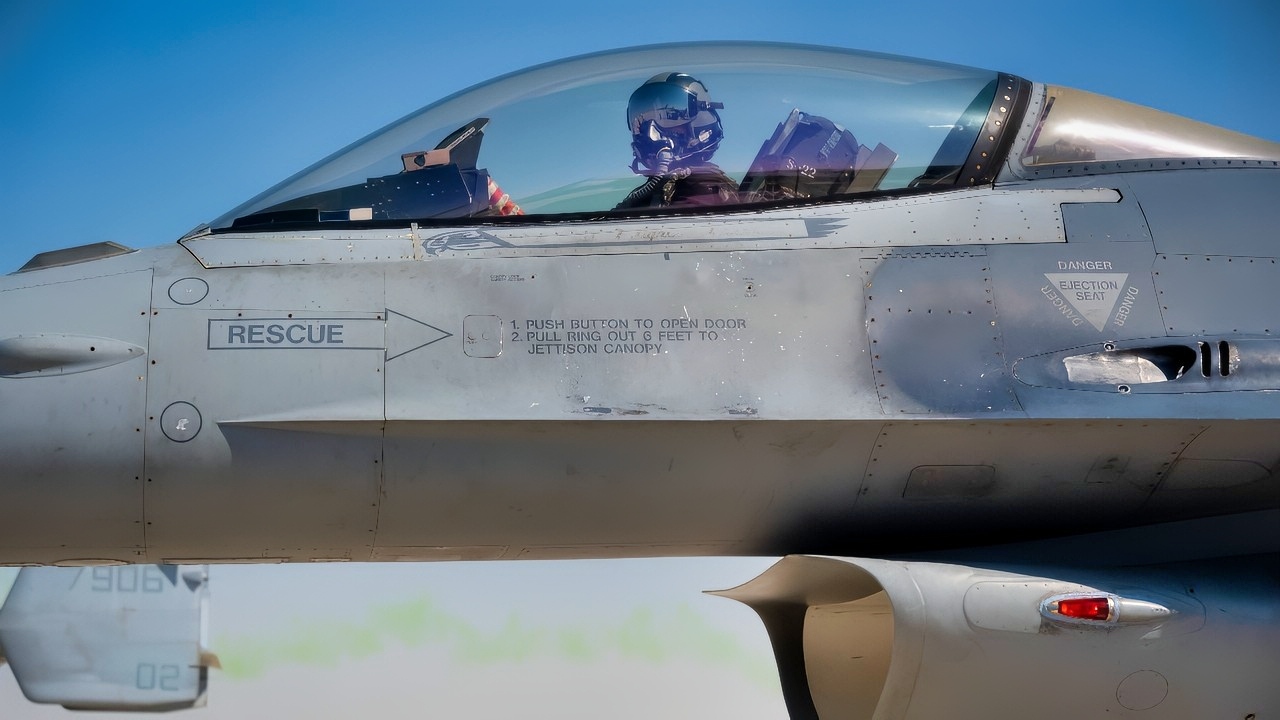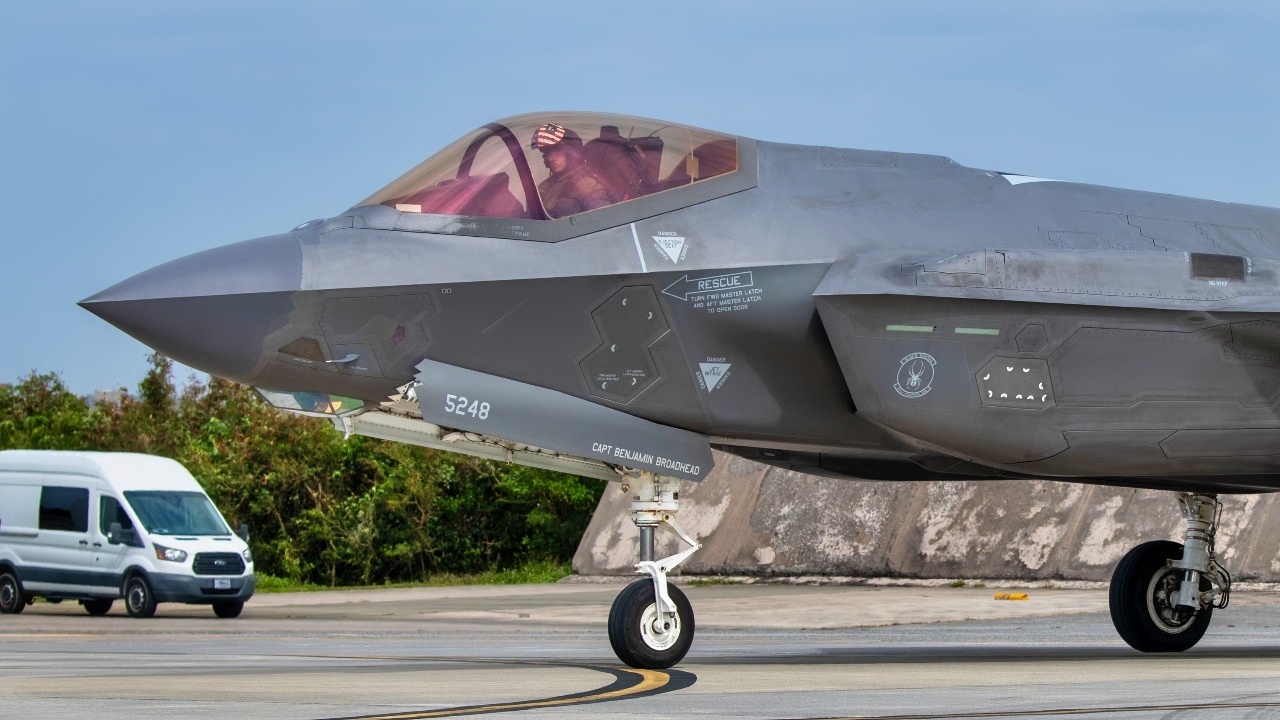Key Points and Summary – A new RAND Corporation report warns that “interoperability” within NATO air forces is largely a myth, creating significant fragility.
-Despite allies flying the “same” aircraft, like the F-16, they actually operate dozens of unique variants with incompatible parts, engines, and ground support equipment.

Airmen from the 35th Aircraft Maintenance Unit weapons load crew, transport an AIM 9 L/M Sidewinder with an MJ-1 bomb lift truck during the Annual Load Crew Competition at Kunsan Air Base, Republic of Korea, Feb. 6, 2021. Weapons load crews from the 35th Aircraft Maintenance Unit, 80th AMU and 8th Maintenance Squadron were evaluated on how quickly and effectively they could load munitions onto F-16 Fighting Falcons. (U.S. Air Force photo by Tech. Sgt. Kristin High)

U.S. Air Force Maj. Josiah “Sirius” Gaffney, Pacific Air Forces Demonstration Team commander, prepares to fly a practice sortie before the Dubai Airshow in Dubai, United Arab Emirates, Nov. 11, 2021. In addition to the PACAF F-16 Demonstration Team routine, the air show will highlight a variety of U.S. Air Force, Navy and Marine Corps aircraft showcasing the range of U.S. military airpower capabilities. (U.S. Air Force photo by Staff Sgt. Matthew Kakaris)
-This problem persists with the F-35, where U.S. security policies and data firewalls prevent allied nations from “cross-servicing” each other’s jets.
-The report concludes that this lack of true standardization creates significant cost, fragility, and operational barriers for the alliance.
NATO Has a Problem: Why an F-16 From Poland Can’t Be Fixed in Germany
Within the NATO alliance, a term used ad infinitum is “interoperability.” The phrase, which means that different nations that operate the same weapons platforms should be able to interchangeably operate and support each other’s weapon systems, as well as conduct joint missions, is considered the Holy Grail of any military alliance.
The fact that the United States and European nations operate many of the same model aircraft was supposed to create several synergies. With so many countries flying the F-16 (many of which are transitioning to the F-35), the problem of multiple logistics structures across multiple countries should not even exist.
However, a September report from the RAND Corporation, a US federally funded research center run by the US Air Force, says that the benefits of “interoperability” are more myth than reality.
Many European air forces are supposed to use the same spare parts and identical models of ground support equipment, and should be serviced by mechanics who have all been trained to perform repairs on the same model of aircraft. In theory, any technician from any nation that operates the aircraft model “X” should be able to fix the same model operated by another European nation.
There Are No Universal Standards
As the RAND report notes, this was the theoretical construct used to justify why the alliance should all operate the same aircraft models. But the day-to-day life of managing these air force fleets is far more complicated.
There are large numbers of aircraft with the same designator, but within the “F-16C/D” category, for example, there are dozens of different variants labeled as the same model. These many different internal systems and non-US standard configurations then create requirements for incompatible sets of support equipment.

A U.S. Air Force F-35A Lightning II aircraft with the Wisconsin Air National Guard’s 115th Fighter Wing ascends into the clouds during exercise Northern Lightning Aug. 9, 2024, at Volk Field. Wisconsin. The F-35 works in parallel with 4th generation fighters, demonstrating the strength of combined airpower in the face of strategic competition. (U.S. Air National Guard photo by Staff Sgt. Constantine Bambakidis)

An F-35A Lightning II assigned to the 4th Fighter Squadron, Hill Air Force Base, Utah, taxis into position in front of two U.S. Air Force Airmen with the 18th Logistics Readiness Squadron for forward area refueling point operations during a FARP demonstration at Kadena Air Base, Japan, Feb. 14, 2024. FARP allows operators to transfer fuel from one aircraft to another; this process enables fighter aircraft to land, refuel or re-arm before returning to air-battle operations rapidly in contested environments. (U.S. Air Force photo by Airman 1st Class Jonathan R. Sifuentes)
This, in turn, creates firewalls and other barriers within the computerized databases that support these aircraft, which is a major problem with the F-35. Again, the inability to share data and procedures across these computer systems is another set of impediments to interoperability.
There are still roughly 600 F-16s in European air forces, and in recent years, some of these nations have been exploring options to upgrade them with new radars and other on-board subsystems.
But this is all easier said than done, explained a Raytheon representative here in Poland a few years ago. At the time, he was proposing an active electronic scanning array (AESA) radar, designated RACR, as a retrofit for the Polish Air Force (SP) F-16s.
“These F-16s may all look alike on the outside when they are lined up on the tarmac for inspection,” he explained. “But when you start taking off panels and look inside below the surface you see more differences than you can imagine.”
Within the European air forces, as he pointed out, these 600 aircraft represent a half-dozen or more block variants. These aircraft can be fitted with either a General Electric or a Pratt & Whitney engine, different on-board oxygen generating systems (OBOGS), and, depending on the block series, the aircraft’s on-board infrastructure may be either digital or analog.
It’s Worse on the Ground
The situation only becomes worse when it comes to the ground support equipment needed to diagnose faults, download mission data files, and upload software updates.
The RAND report finds that “some nations use US-standard SE [support equipment], while others develop their own, which may only be partially compatible. Adding to this complexity, some NATO members — such as Poland, Slovakia, and Bulgaria — have historically operated Soviet-era fighters like the MiG-29, with SE that is not designed for Western aircraft.”
Cross-servicing was advocated as a means to simplify issues arising from multiple nations now operating the F-35, an aircraft far more complex than the F-16. But US government policies have created interoperability issues in ground support, according to the report.
There are security parameters that limit allied nations’ ability to cross-service F-35s, and operational planners should “be aware of this,” the report points out. But even within individual US fighter wings, there are differing policies governing the use of allied support equipment, even though those wings are units within the same air force.
“USAFE’s [U.S. Air Forces in Europe–Air Forces Africa’s] efforts to enhance interoperability face a fundamental challenge: poor communication among key stakeholders, including USAFE wings, HQ USAFE, and enterprise entities like AFLCMC [Air Force Life Cycle Management Center],” again according to the report.
RAND researcher Patrick Mills, who worked on this and another recent interoperability report, explained just how critical improving interoperability is.
“Fighter operations are enormously resource-intensive, drawing on base support and skilled maintainers that each nation and operating location has to replicate.”
“Threats to airfields and the small size of most European fleets mean each nation bears high costs to sustain limited capability. If allied fleets and bases could truly interoperate and integrate, that fragility would largely disappear.”
About the Author: Reuben F. Johnson
Reuben F. Johnson has thirty-six years of experience analyzing and reporting on foreign weapons systems, defense technologies, and international arms export policy. Johnson is the Director of the Asia Research Centre at the Casimir Pulaski Foundation. He is also a survivor of the Russian invasion of Ukraine in February 2022. He worked for years in the American defense industry as a foreign technology analyst and later as a consultant for the U.S. Department of Defense, the Departments of the Navy and Air Force, and the governments of the United Kingdom and Australia. In 2022-2023, he won two awards in a row for his defense reporting. He holds a bachelor’s degree from DePauw University and a master’s degree from Miami University in Ohio, specializing in Soviet and Russian studies. He lives in Warsaw.
More Military
Nimitz-Class Aircraft Carrier USS Carl Vinson Has a Message for the U.S. Navy
The Navy’s New DDG(X) Destroyer Looks Like a Missile and Laser Machine
Germany’s Big F-35 Fighter Purchase Comes Down to 1 Word
Eurofighter Typhoon vs. JAS 39 Gripen E: Who Wins Summed up in 4 Words
JAS 39 Gripen E vs. Dassault Rafale Fighter: Who Wins in a Fight Summed Up in 4 Words










